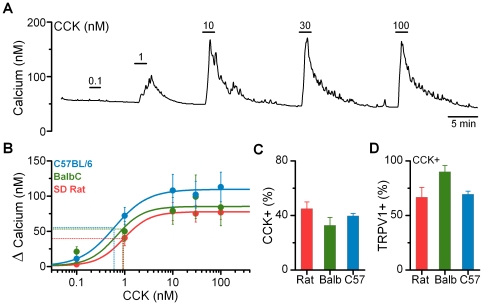Figure 3. Cholecystokinin (CCK) produces nearly identical activation of cultured vagal afferents from the rat and mouse species. A).
CCK produces dose dependent increases in cytosolic calcium concentrations in a subpopulation of vagal afferents. Neurons were also challenged with CAP to determine afferent subtype and HiK to verify viability (data not shown). Trace is from a representative neuron taken from a C57BL/6 mouse. B) CCK dose response relationships across species/strains: C57BL/6 mouse, n = 4, EC50 = 0.60 ± 0.22 nM CCK, slope = 1.24 ± 0.26, max = 108 ± 23 nM calcium; BalbC mouse, n = 5, EC50 = 0.92 ± 0.77 nM CCK, slope = 3.03 ± 29.5, max = 99 ± 31 nM calcium; and SD rat, n = 7, EC50 = 0.95 ± 0.35 nM CCK, slope = 1.58 ± 0.40, max = 77 ± 10 nM calcium. C) Percent of total viable neurons tested responsive to CCK. Results from challenges with 10 nM CCK were used to determine population characteristics (SD rat, 45 ± 5%, combined n = 35/75; BalbC, 33 ± 6%, combined n = 41/111; C57BL/6, 40 ± 2%, combined n = 38/90). D) Percent of CCK responsive neurons also activated by CAP (SD rat, 67 ± 9%, combined n = 15/21; BalbC, 90 ± 6%, combined n = 17/19; C57BL/6, 69 ± 3%, combined n = 13/19).

